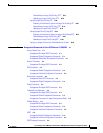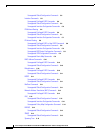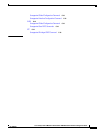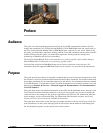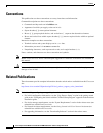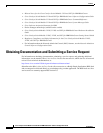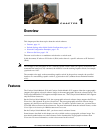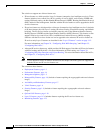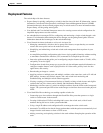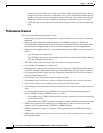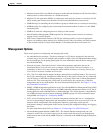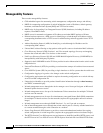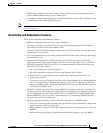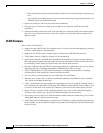
CHAPTER
1-1
Cisco Catalyst Switch Module 3110 and 3012 for IBM BladeCenter Software Configuration Guide
OL-12189-01
1
Overview
This chapter provides these topics about the switch software:
• Features, page 1-1
• Default Settings After Initial Switch Configuration, page 1-14
• Network Configuration Examples, page 1-16
• Where to Go Next, page 1-20
The term switch refers to a standalone switch and to a switch stack.
In this document, IP refers to IP Version 4 (IPv4) unless there is a specific reference to IP Version 6
(IPv6).
Note The examples in this document are for a stacking-capable switch. When you specify an interface in a
command-line interface (CLI) command, the interface is on the stacking-capable switch, for example,
gigabitethernet 1/0/5.
The examples also apply to the nonstacking-capable switch. In the previous example, the specified
interface on a nonstacking-capable switch is gigabitethernet0/5 (without the stack member number
of 1/).
Features
The Catalyst Switch Module 3110 and Catalyst Switch Module 3012 support either the cryptographic
(supports encryption) universal software image or the noncryptographic universal software image. The
Catalyst Switch Module 3110 supports multiple feature sets . The Catalyst Switch Module 3012 supports
only the IP base feature set.
On the Catalyst Switch Module 3110, the cryptographic universal software image supports the IP base,
IP services, and advanced IP services feature sets. The noncryptographic universal software image
supports only the IP base and IP services feature sets. To enable a specific feature set, you must have a
Cisco IOS software license for that feature set. For more information about the software license, see the
Cisco Software Activation for IBM document on Cisco.com.
On the Catalyst Switch Module 3012, you do not need a software license.
Some features described in this chapter are only available on the cryptographic software image. You
must obtain authorization to use these features and to download the cryptographic software from
Cisco.com. For more information, see the release notes for this release.



